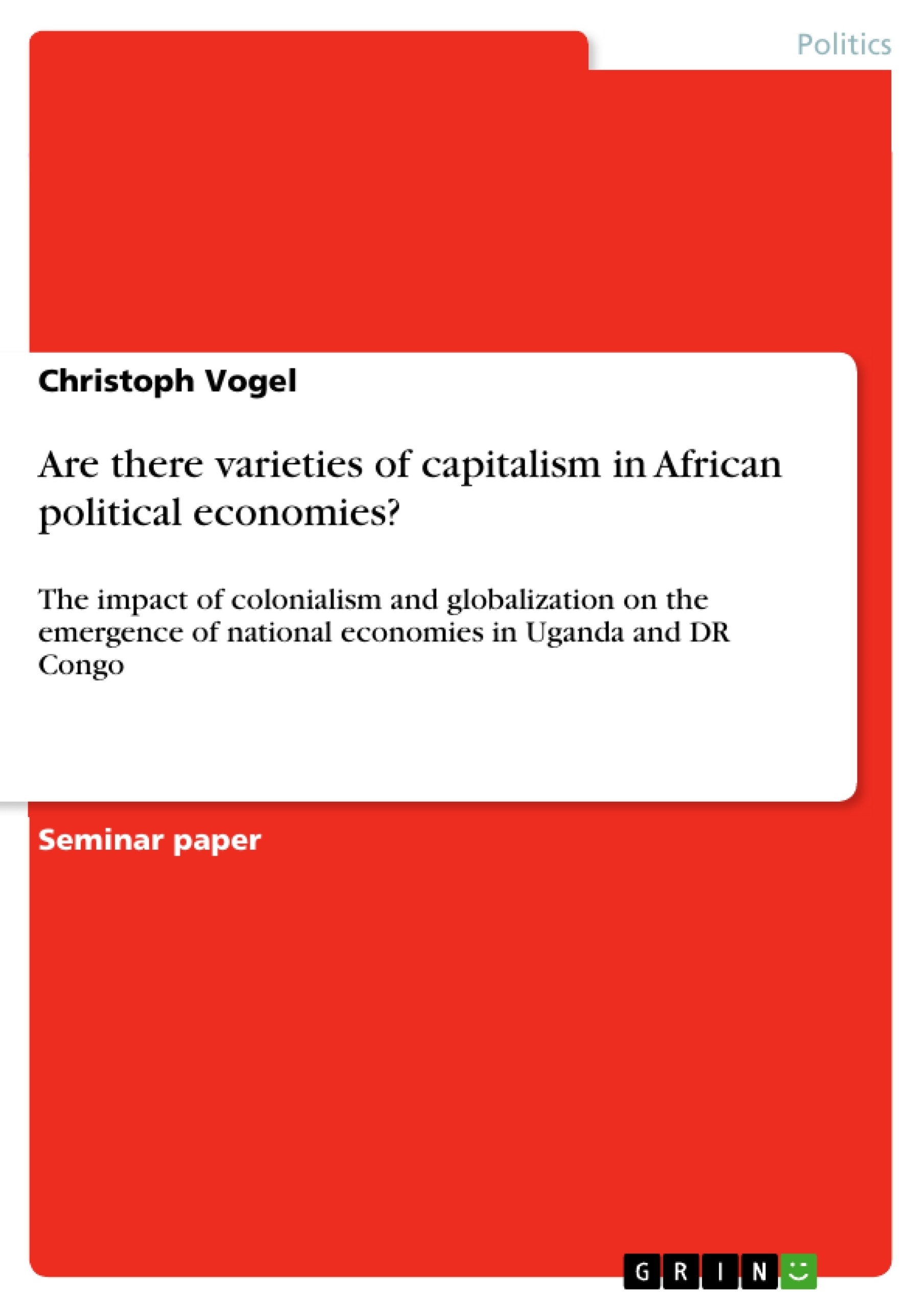Since the last decade scientific research on capitalism has experienced a noticeably grown
attention among scholars as well as politicians. One of the most discussed approaches in this
field of comparative analysis of political economy is the ‘varieties of capitalism’ theory1
developed by Peter Hall and David Soskice. Their approach basically focuses on how
different actors may behave in a certain politico-economic state configuration and on how
far this configuration can determine a national type or variety of capitalism as well as the
economic success of a political economy.
This approach, though, has been designed with a view to the so-called ‘developed
economies’, which are to be found in Western and Central Europe as well as in North
America. In the era of globalization other economies have come into play, with their
performances ranging from real success stories, as in several Asian economies, to
considerable failure, as in most marginalized Sub-Saharan African economies.
After presenting Hall and Soskice’s approach and some of its criticisms in order to
give a conceptual framework, this paper will provide a very brief overview of the political
economy of colonialism, followed by a case-study analysis of the contemporary political
economies of Uganda and the Democratic Republic of Congo (DRC).
The main research question is to identify to which extent varieties of capitalism
imported from colonial powers have fashioned today’s economies in the chosen cases as
‘economic models’ or how far the empirically established colonial economic systems are
responsible for post-colonial developments. The former colonial power in Uganda, Great
Britain, will be considered as a Liberal Market Economy, whereas DRC’s colonial power,
Belgium, will be assigned the Coordinated Market Economies2 type. In order to avoid
analytical shortcomings, this paper also tries to take into consideration the discrepancy
between those models and the colonial reality as well as postcolonial developments, which
have evolved due to domestic characteristics or as a consequence of a globalizing political
economy.
STRUCTURE
I INTRODUCTION
II VARIETIES OF CAPITALISM AND ITS CRITIQUE
II.1 THE VARIETIES OF CAPITALISM APPROACH
II.2 CRITIQUE OF THE VARIETIES OF CAPITALISM APPROACH
III. SOME NOTES ON POLITICAL ECONOMY IN COLONIAL AFRICA
IV THE SITUATION IN UGANDA
IV.1 UGANDA’S POST-COLONIAL ECONOMY AT A GLANCE
IV.2 UGANDA’S VARIETY OF CAPITALISM
V THE SITUATION IN THE DEMOCRATIC REPUBLIC OF CONGO
V.1 ‘CONGO-KINSHASA’S’ POST-COLONIAL ECONOMY AT A GLANCE
V.2 DEMOCRATIC REPUBLIC OF CONGO’S VARIETY OF CAPITALISM
VI CONCLUSION
VII TABLES
VIII BIBLIOGRAPHY



